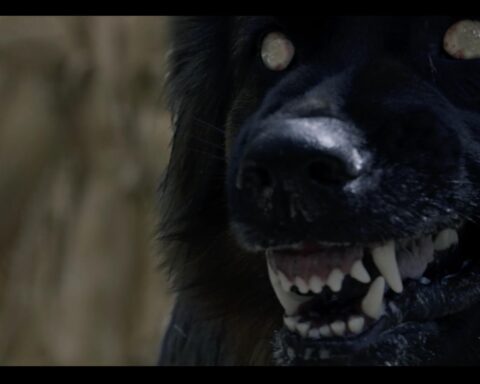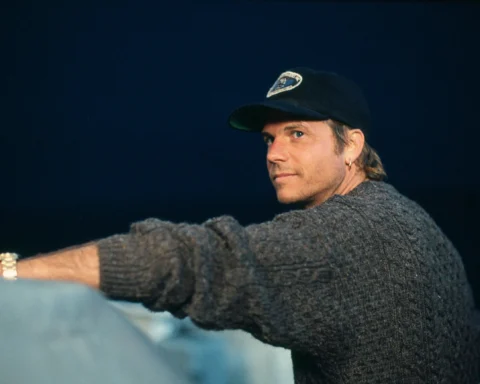The slasher genre has always occupied a unique and significant space in the world of horror cinema. Emerging prominently in the late 1970s and reaching its peak in the 1980s, the slasher film combines visceral fear with a formulaic narrative structure, often revolving around a masked killer and a series of gruesome murders. Among the myriad of slasher films, Wes Craven’s “Scream” franchise stands out as a pivotal series that not only reinvigorated the genre but also offered a meta-commentary on its conventions. This essay delves into the “Scream” franchise, analyzing each film in detail, exploring its place in the history of slasher movies, and hypothesizing about its myriad references and cross-references within the horror genre. Additionally, we will examine the franchise’s commentary on the horror movie genre, its production quality, cast, and artistic references, highlighting how “Scream” serves as a masterclass in the study of horror cinema.
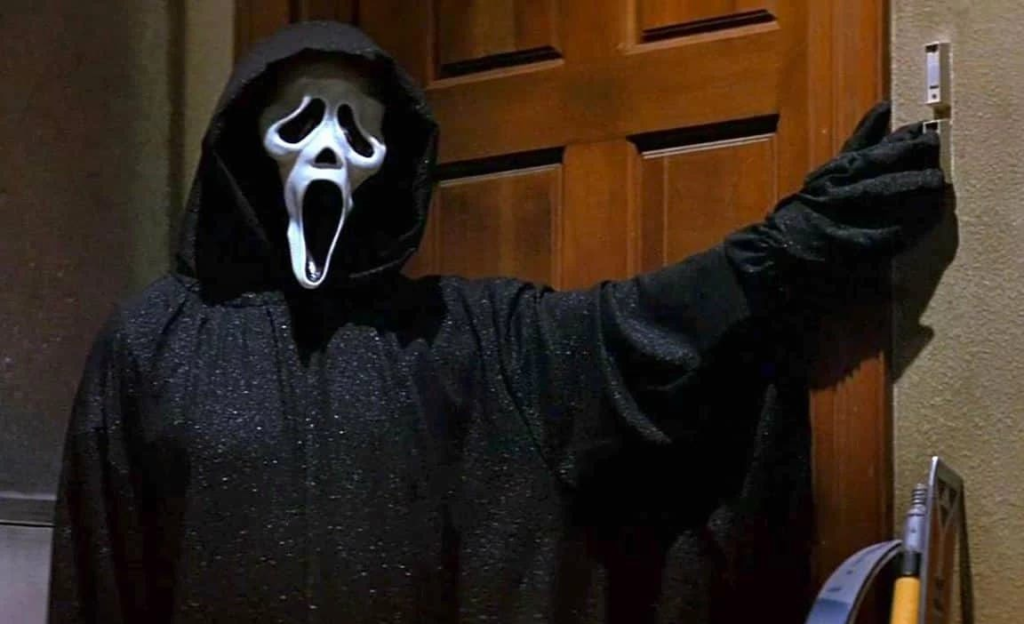
1. The History of Slasher Films
Origins and Early Developments
The slasher genre finds its roots in early cinematic horror, with films like Alfred Hitchcock’s “Psycho” (1960) and Michael Powell’s “Peeping Tom” (1960) laying the groundwork for what would become a distinct subgenre. These films introduced elements such as the voyeuristic perspective, psychological trauma, and the masked killer, which would become staples in later slasher movies.
The genre began to take shape with Mario Bava’s “A Bay of Blood” (1971), which featured graphic violence and inventive kills. However, it was John Carpenter’s “Halloween” (1978) that truly defined the slasher formula, introducing the masked killer Michael Myers and the concept of the “final girl” with Laurie Strode (Jamie Lee Curtis). “Halloween” established the basic template for slashers: a relentless killer, a series of brutal murders, and a climactic showdown with the protagonist.
The Golden Age of Slashers
The late 1970s and 1980s marked the golden age of slasher films, with a proliferation of titles that followed the “Halloween” blueprint. Films like “Friday the 13th” (1980), “A Nightmare on Elm Street” (1984), and “Child’s Play” (1988) introduced new iconic killers—Jason Voorhees, Freddy Krueger, and Chucky—each with their own unique characteristics and mythologies. These films capitalized on the audience’s appetite for gore and suspense, often incorporating supernatural elements and increasingly elaborate kill scenes.
The golden age of slashers was characterized by low-budget productions that yielded high returns, leading to numerous sequels and spin-offs. While the genre enjoyed commercial success, it also faced criticism for its formulaic nature and perceived exploitation of violence, particularly against women.
Decline and Parody
By the early 1990s, the slasher genre had entered a period of decline. The market was oversaturated with repetitive and derivative films, leading to audience fatigue. Parodies like “Scary Movie” (2000) and “Student Bodies” (1981) further highlighted the genre’s clichés and diminishing creative innovation.
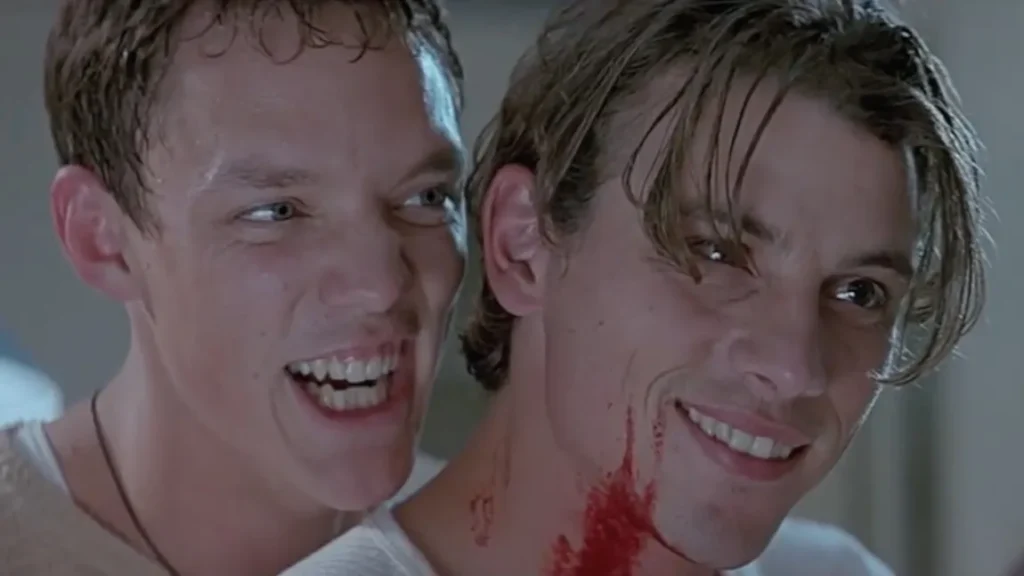
2. Scream (1996): The Revival of Slasher Cinema
“Scream” (1996), directed by Wes Craven and written by Kevin Williamson, marked a turning point for slasher films. Released at a time when the genre was considered by many to be in decline, “Scream” revitalized interest with its clever blend of self-awareness, humor, and genuine scares.
Plot and Structure
The film opens with a now-iconic scene featuring Drew Barrymore as Casey Becker, who is terrorized by a masked killer during a phone call. This prologue sets the tone for the entire film, combining tension with a knowing nod to horror tropes. The story follows Sidney Prescott (Neve Campbell), a high school student in the fictional town of Woodsboro, who becomes the target of the masked killer known as Ghostface. The film’s climax reveals the killers to be Sidney’s boyfriend Billy Loomis (Skeet Ulrich) and his accomplice Stu Macher (Matthew Lillard), who were motivated by a mix of revenge and psychopathy.
Meta-Commentary and Genre Deconstruction
“Scream” stands out for its meta-commentary on horror films. Characters frequently reference horror movie rules and clichés, such as “Don’t have sex,” “Don’t drink or do drugs,” and “Never say ‘I’ll be right back.'” This self-awareness is epitomized by Randy Meeks (Jamie Kennedy), a film geek who serves as the audience’s surrogate, explaining the genre’s conventions while simultaneously participating in the narrative.
Impact and Legacy
The success of “Scream” had a profound impact on the horror genre, spawning a wave of imitators and revitalizing slasher films for a new generation. Its blend of satire and horror paved the way for films like “I Know What You Did Last Summer” (1997) and “Urban Legend” (1998). Moreover, “Scream” established the formula for self-referential horror that would influence subsequent filmmakers.
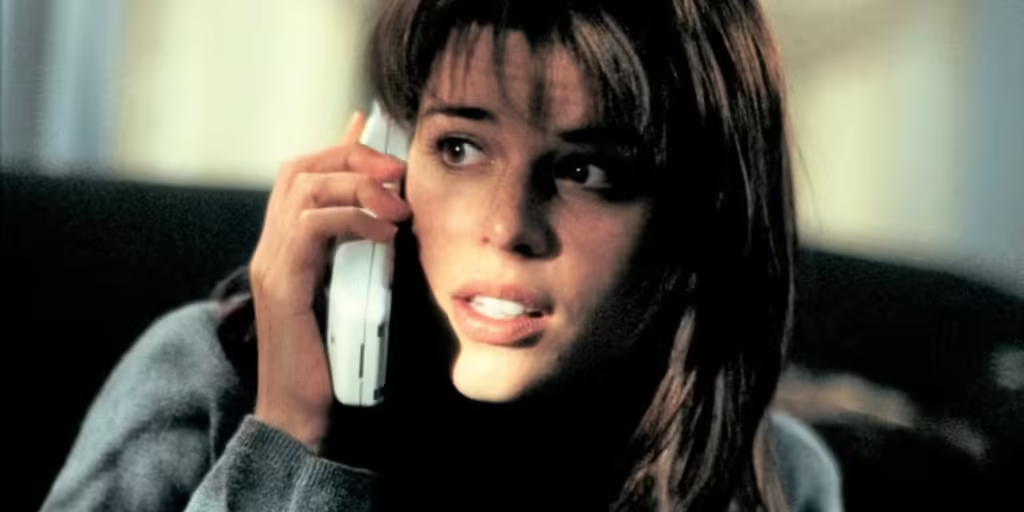
3. Scream 2 (1997): The Sequel Paradox
Released just a year after the original, “Scream 2” continued the story of Sidney Prescott while expanding on the themes and conventions of the first film. Directed again by Wes Craven and written by Kevin Williamson, the sequel explores the challenges of creating a successful follow-up to a popular horror film.
Plot and Structure
“Scream 2” is set at the fictional Windsor College, where Sidney is trying to move on with her life. However, the murders start again, this time surrounding the release of “Stab,” a film within the film based on the events of the first “Scream.” The killers in “Scream 2” are revealed to be Mickey Altieri (Timothy Olyphant), a film student, and Mrs. Loomis (Laurie Metcalf), Billy Loomis’s mother, seeking revenge for her son’s death.
Meta-Commentary on Sequels
The film delves into the “sequel rules,” exploring how sequels often attempt to outdo their predecessors in terms of body count and spectacle. Characters debate the merits of sequels, with references to films like “Aliens” and “Terminator 2.” This meta-narrative reflects the filmmakers’ awareness of the challenges they faced in crafting a sequel that could stand on its own while honoring the original.
Impact and Reception
“Scream 2” was well-received by both audiences and critics, praised for its suspense, humor, and clever commentary on the nature of sequels. While not as groundbreaking as the original, it successfully built on its predecessor’s foundation, maintaining the franchise’s popularity and solidifying its place in horror cinema.
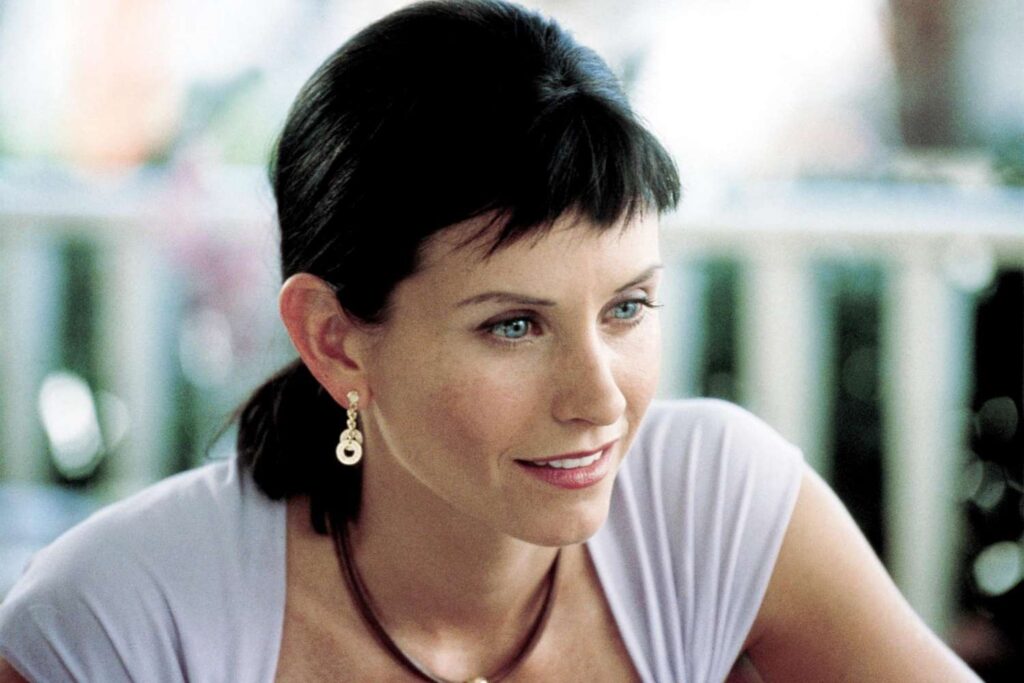
4. Scream 3 (2000): The Trilogy Conundrum
“Scream 3,” directed by Wes Craven and written by Ehren Kruger, represents the culmination of the original trilogy. Released in 2000, the film takes a more comedic and self-referential approach, reflecting the changing landscape of horror at the turn of the millennium.
Plot and Structure
The third installment is set in Hollywood, where “Stab 3” is in production. Sidney is living in seclusion, haunted by the trauma of her past, but is drawn back into the fray when murders begin on the film set. The killer is eventually revealed to be Roman Bridger (Scott Foley), the director of “Stab 3” and Sidney’s half-brother, who harbors a deep resentment towards her.
Meta-Commentary on Trilogies
“Scream 3” explores the “trilogy rules,” emphasizing that in the final installment, all bets are off, and the past will come back to haunt the characters. The film makes numerous references to the mechanics of trilogies, acknowledging the difficulty of maintaining originality and coherence over multiple films.
Impact and Criticism
While “Scream 3” was commercially successful, it received mixed reviews. Critics praised its humor and self-referential nature but criticized its convoluted plot and lack of genuine scares compared to the first two films. Despite these criticisms, “Scream 3” remains a significant entry in the franchise, offering closure to the original trilogy while maintaining the series’ distinctive blend of horror and satire.
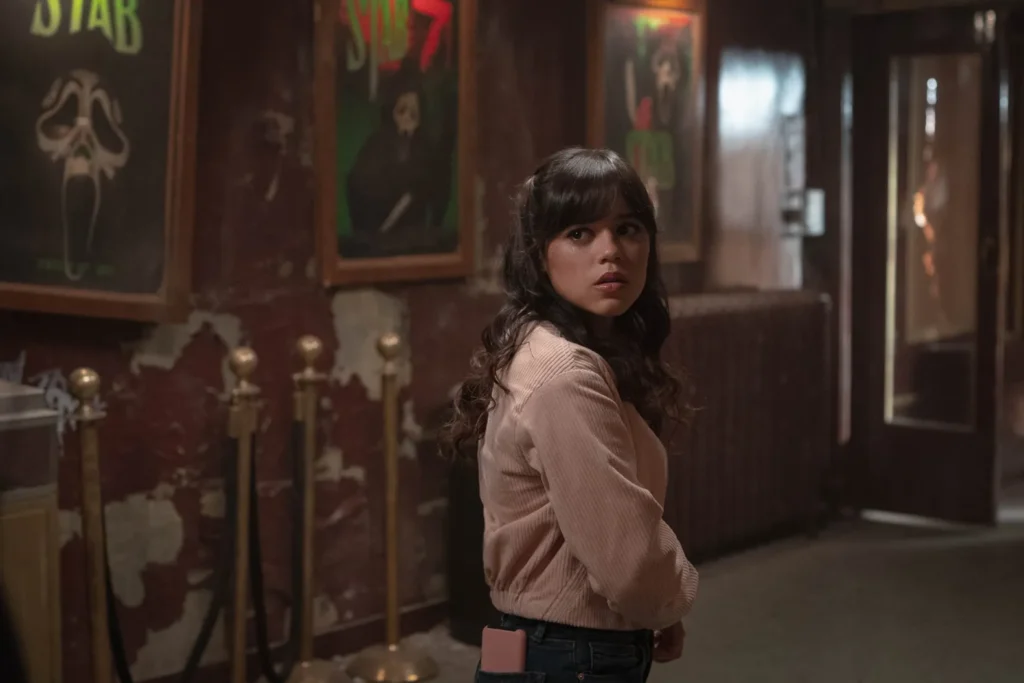
5. Scream 4 (2011): Rebooting the Franchise
Over a decade after “Scream 3,” Wes Craven and Kevin Williamson reunited for “Scream 4,” which sought to reboot the franchise for a new generation. Released in 2011, the film addresses the rise of social media and the changing landscape of horror cinema.
Plot and Structure
“Scream 4” returns to Woodsboro, where Sidney is promoting her new book. The murders begin again, with the killer targeting a new generation of teenagers. The film introduces Jill Roberts (Emma Roberts), Sidney’s cousin, who is ultimately revealed as the killer alongside her accomplice Charlie Walker (Rory Culkin). Their motivation is to achieve fame by recreating the original murders.
Meta-Commentary on Reboots and Technology
The film’s meta-commentary focuses on the concept of reboots and the impact of technology on modern horror. Characters discuss the rules of remakes and the influence of social media on fame and identity. “Scream 4” critiques the obsession with notoriety in the digital age, highlighting how the quest for fame can drive individuals to extreme actions.
Impact and Reception
“Scream 4” received generally positive reviews, praised for its clever commentary and return to the series’ roots. It successfully introduced the franchise to a new generation while retaining the elements that made the original films iconic. The film’s exploration of reboots and technology added a contemporary edge, demonstrating the franchise’s adaptability and relevance.

6. Scream (2022): A Legacy Revisited
The fifth installment, simply titled “Scream,” was released in 2022, directed by Matt Bettinelli-Olpin and Tyler Gillett, with Kevin Williamson serving as an executive producer. This film aimed to honor the legacy of Wes Craven while introducing new characters and themes.
Plot and Structure
Set 25 years after the original murders, the new “Scream” follows Samantha Carpenter (Melissa Barrera) and her sister Tara (Jenna Ortega) as they are targeted by a new Ghostface killer. The film brings back legacy characters Sidney Prescott, Gale Weathers (Courteney Cox), and Dewey Riley (David Arquette) to help the new generation confront the killer. The killers are revealed to be Richie Kirsch (Jack Quaid) and Amber Freeman (Mikey Madison), fans of the “Stab” franchise who want to create a “requel” that combines elements of a reboot and a sequel.
Meta-Commentary on Legacy and Fandom
The film explores the concept of “requels” and the legacy of long-running franchises. It addresses the challenges of balancing new characters with returning ones and the impact of toxic fandom on popular culture. Characters discuss the rules of “requels,” emphasizing the need to honor the past while introducing fresh elements.
Impact and Reception
The 2022 “Scream” was well-received, praised for its respectful homage to the original films and its clever commentary on modern horror. It successfully revitalized the franchise, appealing to both longtime fans and new audiences. The film’s exploration of legacy and fandom resonated with viewers, reflecting contemporary cultural dynamics.
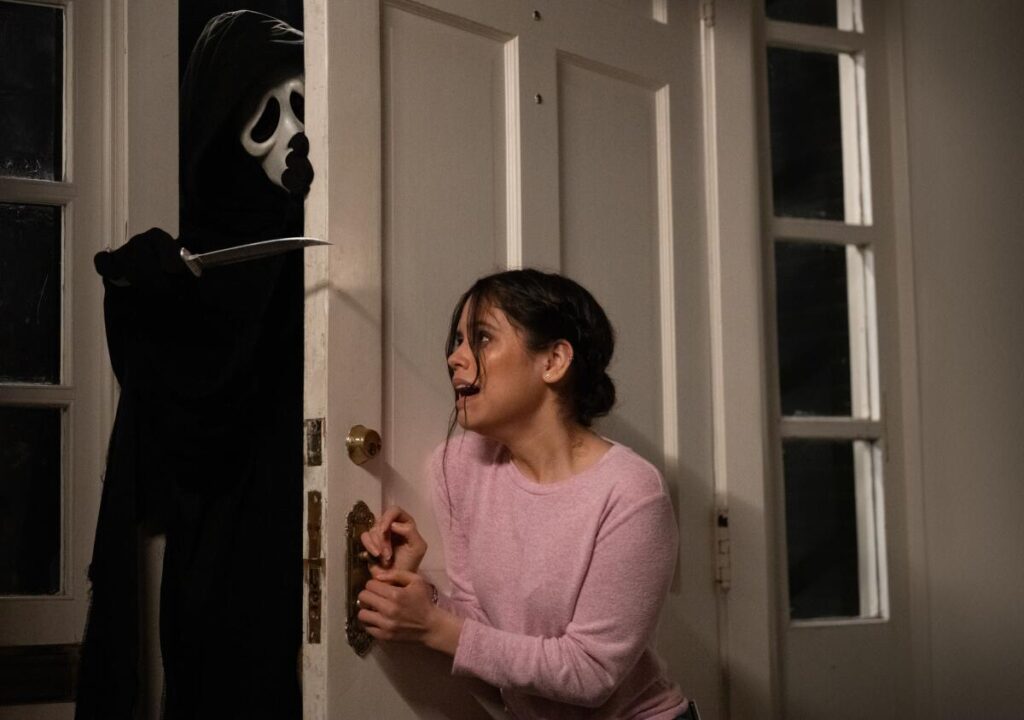
7. Scream VI (2023): Expanding the Universe
“Scream VI,” directed by Matt Bettinelli-Olpin and Tyler Gillett, continued the story of Samantha and Tara Carpenter while expanding the franchise’s universe. Released in 2023, the film explores the challenges of sustaining a long-running series and the shift from small-town settings to urban environments in horror.
Plot and Structure
The film takes place in New York City, where Samantha and Tara are trying to rebuild their lives. However, the murders start again, this time involving a new group of killers. The film delves deeper into the characters’ backgrounds and motivations, adding complexity to the narrative. The killers are revealed to be connected to past characters, creating a sense of continuity and depth.
Meta-Commentary on Urban Horror and Franchise Longevity
“Scream VI” examines the challenges of sustaining a long-running franchise and the shift from small-town settings to urban environments in horror. Characters discuss how urban settings can amplify fear and paranoia, reflecting the evolution of the genre in contemporary cinema.
Impact and Reception
“Scream VI” received positive reviews, praised for its inventive approach and expansion of the franchise’s universe. It successfully balanced new elements with familiar themes, appealing to both longtime fans and new audiences. The film’s exploration of urban horror added a fresh dimension to the series, demonstrating its continued relevance and adaptability.
8. Scream VII (2024): The Future of the Franchise
As of the time of writing, “Scream VII” is in development, with anticipation building among fans and critics alike. While details about the plot and cast are still under wraps, the film is expected to continue the story of Samantha and Tara Carpenter, further exploring the themes of legacy, fandom, and the evolution of horror.

The Place of “Scream” in Slasher History
The “Scream” franchise occupies a unique and influential place in the history of slasher films. Its success lies not only in its ability to scare audiences but also in its clever deconstruction of the genre’s conventions. By blending self-awareness, humor, and genuine horror, “Scream” has left an indelible mark on horror cinema.
Innovations and Contributions
“Scream” introduced several innovations to the slasher genre. Its meta-commentary on horror tropes and rules offered a fresh perspective, inviting audiences to engage with the narrative on a deeper level. The franchise’s self-referential nature has influenced numerous films and television shows, establishing a new subgenre of meta-horror.
Character Development and Strong Protagonists
The franchise is notable for its strong, complex characters, particularly its protagonist, Sidney Prescott. Sidney’s evolution from a traumatized teenager to a resilient survivor provides a compelling throughline for the series. The inclusion of strong female characters who defy the traditional “final girl” trope adds depth and nuance to the narrative.
Cultural Impact and Legacy
“Scream” has had a significant cultural impact, shaping the way audiences perceive and interact with horror films. Its influence extends beyond cinema, impacting popular culture, fashion, and even academic discourse on horror. The franchise’s ability to adapt to changing cultural and technological landscapes ensures its continued relevance and appeal.

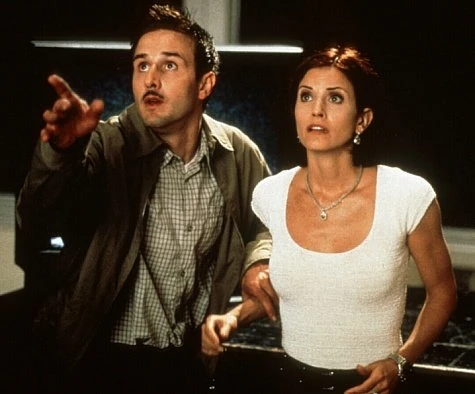
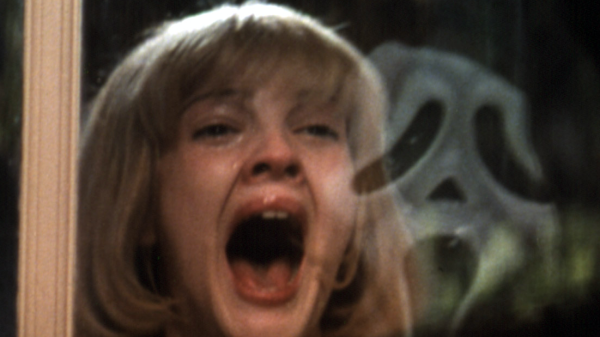
Hypotheses on Movie References and Cross-Referencing
The “Scream” franchise is rich with references to other horror films, creating a tapestry of intertextuality that enhances its narrative complexity. These references serve multiple purposes: they pay homage to the genre’s history, create a sense of continuity, and invite audiences to engage in a game of recognition and interpretation.
Homages to Classic Horror Films
Throughout the franchise, there are numerous nods to classic horror films. The opening scene of “Scream” (1996) mirrors the iconic shower scene in Alfred Hitchcock’s “Psycho” (1960), while the character names and plot points reference films like “Halloween” (1978) and “Friday the 13th” (1980). These homages celebrate the genre’s legacy and position “Scream” within a broader cinematic context.
For instance, Tatum Riley’s (Rose McGowan) garage death scene in “Scream” (1996) is reminiscent of the inventive and gruesome kills seen in the “Friday the 13th” series. The character of Randy Meeks often serves as a conduit for these references, discussing and dissecting horror film tropes within the narrative, which provides a dual-layered viewing experience where audiences can enjoy the story while appreciating the homage.
Intertextuality and Narrative Complexity
The intertextuality in “Scream” adds layers of meaning to the narrative. By referencing other films, the franchise creates a dialogue with the audience, encouraging viewers to draw connections and explore the implications of these references. This narrative complexity enhances the viewing experience, offering rewards for attentive and knowledgeable fans.
In “Scream 4,” for example, the film-within-a-film structure of “Stab” is used to blur the lines between reality and fiction, making the audience question what is real and what is performance. This approach not only pays homage to the genre’s history but also critiques the commodification of real-life horror through media sensationalism.
Cross-Referencing Within the Franchise
The franchise also engages in self-referential cross-referencing. Characters and events from previous films are frequently mentioned, creating a sense of continuity and depth. The “Stab” films within the “Scream” universe serve as a meta-narrative device, reflecting and amplifying the themes of the main series.
For example, in “Scream 2,” the opening scene with Jada Pinkett Smith and Omar Epps at the “Stab” movie screening creates a meta-horror experience that mirrors the audience’s own experience of watching “Scream.” This layering of narratives adds to the complexity and richness of the franchise, making it a fertile ground for academic analysis and fan engagement.
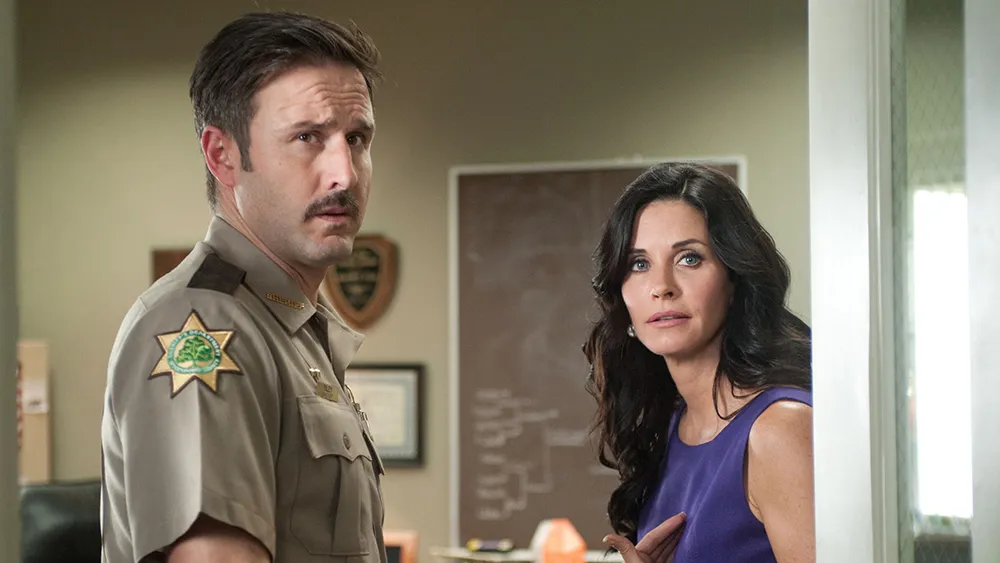
A Masterclass in Studying the Horror Genre
“Scream” stands as a masterclass in studying the horror genre, offering a comprehensive critique and celebration of its conventions, evolution, and cultural impact. The franchise’s success lies in its ability to balance self-awareness with genuine horror, creating a unique viewing experience that both entertains and provokes thought.
Meta-Commentary and Genre Deconstruction
The franchise’s meta-commentary and deconstruction of horror tropes invite audiences to engage critically with the genre. By explicitly discussing the “rules” of horror films, “Scream” encourages viewers to recognize and analyze the patterns and conventions that define slasher movies. This self-awareness not only adds a layer of intellectual engagement but also allows the films to subvert expectations and deliver fresh scares.
Exploration of Fear and Identity
“Scream” delves into the psychology of fear and identity, exploring how trauma, media, and societal expectations shape individuals and communities. Sidney Prescott’s journey from victim to survivor embodies the resilience and complexity of the human spirit, offering a nuanced portrayal of trauma and recovery. The franchise’s exploration of identity, fame, and the impact of media reflects broader cultural anxieties and provides a lens through which to examine contemporary society.

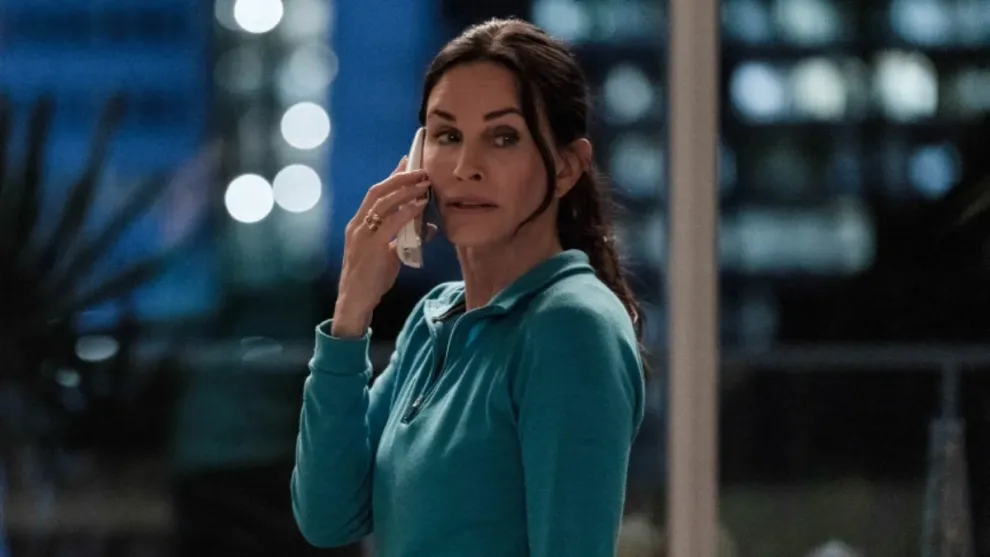

Cast and Quality of Production
The “Scream” franchise boasts a talented ensemble cast, with standout performances that elevate the films beyond typical slasher fare. Neve Campbell’s portrayal of Sidney Prescott is central to the series, imbuing the character with depth and authenticity. Courteney Cox and David Arquette also deliver memorable performances as Gale Weathers and Dewey Riley, respectively, providing both comic relief and emotional resonance.
Artistic References and Cinematic Techniques
The franchise’s quality of production is marked by its meticulous attention to detail and artistic references. Wes Craven’s direction, combined with Marco Beltrami’s haunting score, creates a tense and immersive atmosphere. The use of practical effects and creative kill scenes showcases the filmmakers’ dedication to the craft of horror, balancing gore with suspense to maximize impact.
Cinematographically, the “Scream” films employ a variety of techniques to build tension and enhance the narrative. The use of tracking shots, close-ups, and jump scares is expertly executed, creating a visceral and engaging viewing experience. The films also incorporate visual and thematic references to other works of art, such as the use of surreal and expressionistic elements to heighten the sense of unease and disorientation.
Conclusion: The Enduring Legacy of “Scream”
The “Scream” franchise has left an indelible mark on the horror genre, revitalizing the slasher film and offering a sophisticated critique of its conventions. Through its blend of meta-commentary, strong character development, and innovative storytelling, “Scream” has carved out a unique and influential place in cinematic history.
The franchise’s exploration of fear, identity, and the impact of media reflects broader cultural anxieties and provides a lens through which to examine contemporary society. Its success lies in its ability to balance self-awareness with genuine horror, creating a unique viewing experience that both entertains and provokes thought.
As the franchise continues to evolve with new installments, it remains a vital and relevant force in horror cinema, offering fresh perspectives and engaging narratives that resonate with audiences across generations. “Scream” stands as a testament to the enduring power of the slasher genre, demonstrating that even in a world saturated with horror, there is always room for innovation, introspection, and a good scare.
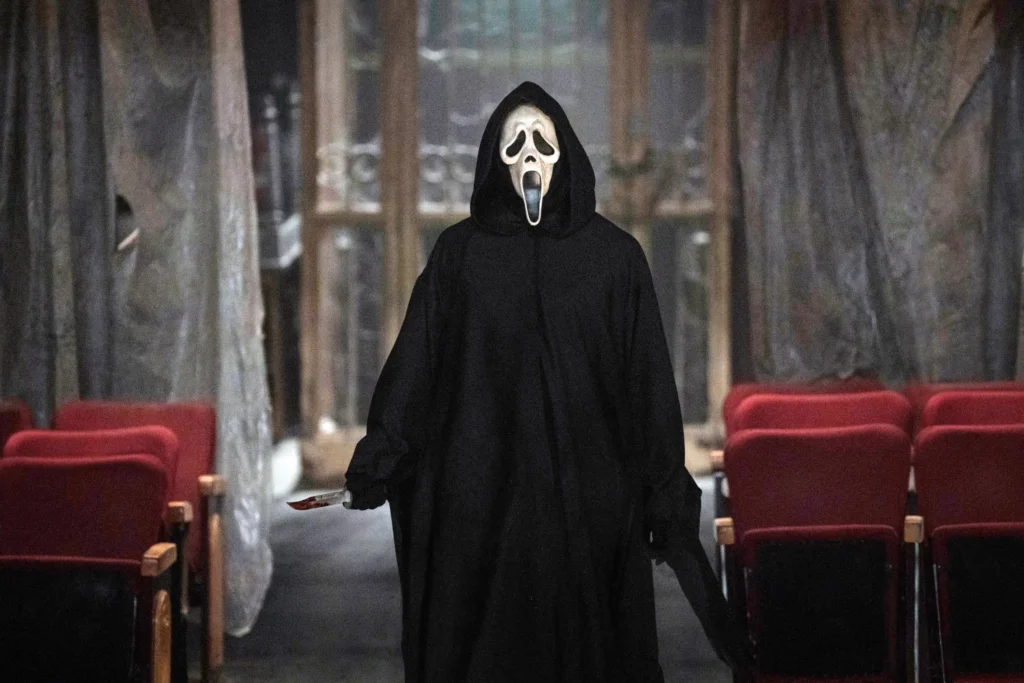

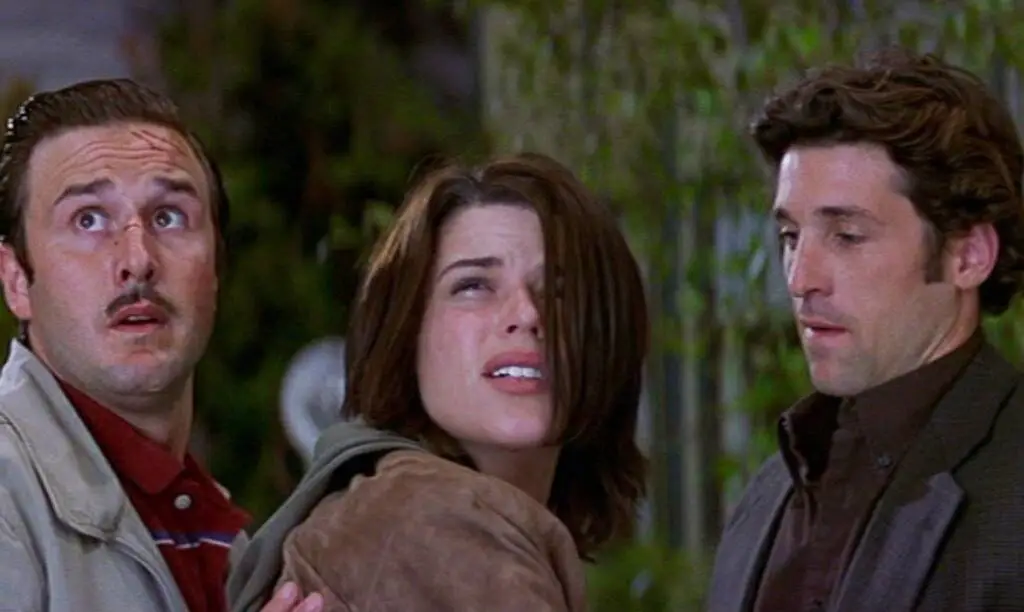
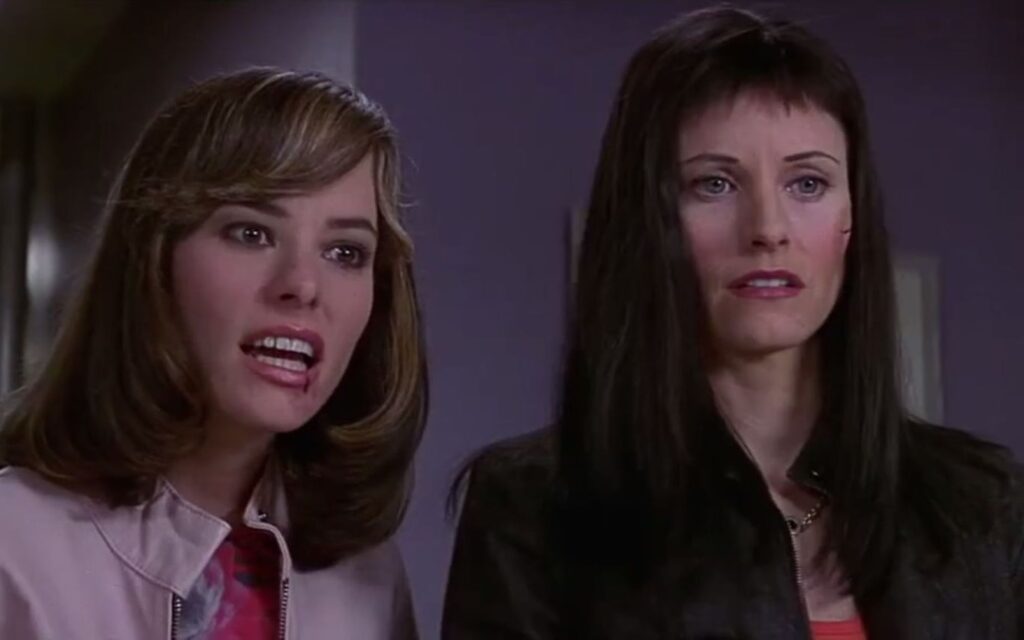
Appendix: Detailed Key Facts of Each Film
Scream (1996)
- Plot Summary: The film follows high school student Sidney Prescott as she becomes the target of a masked killer known as Ghostface. The killer’s identity is revealed to be Sidney’s boyfriend Billy Loomis and his friend Stu Macher.
- Key Themes: Meta-commentary on horror tropes, exploration of trauma and survival, critique of media sensationalism.
- Significant Scenes: The opening sequence with Drew Barrymore, Sidney’s confrontation with the killers, Randy’s discussion of horror movie rules.
- Production Quality: Directed by Wes Craven, written by Kevin Williamson, with a memorable score by Marco Beltrami. Notable for its innovative use of practical effects and creative kill scenes.
Scream 2 (1997)
- Plot Summary: Set at Windsor College, the film follows Sidney as she once again becomes the target of Ghostface. The killers are revealed to be Mickey Altieri and Mrs. Loomis.
- Key Themes: Meta-commentary on sequels, exploration of survivor’s guilt, critique of the commodification of real-life horror.
- Significant Scenes: The opening sequence at the “Stab” movie screening, Sidney’s showdown with Mrs. Loomis, Randy’s discussion of sequel rules.
- Production Quality: Directed by Wes Craven, written by Kevin Williamson, with strong performances and a blend of suspense and humor.
Scream 3 (2000)
- Plot Summary: Set in Hollywood, the film follows Sidney as she is drawn into the murders surrounding the production of “Stab 3.” The killer is revealed to be Roman Bridger, Sidney’s half-brother.
- Key Themes: Meta-commentary on trilogies, exploration of family secrets and betrayal, critique of the Hollywood film industry.
- Significant Scenes: The opening sequence with Cotton Weary, Sidney’s confrontation with Roman, Gale and Dewey’s investigation.
- Production Quality: Directed by Wes Craven, written by Ehren Kruger, with a more comedic and self-referential tone. Notable for its exploration of Hollywood’s impact on horror.
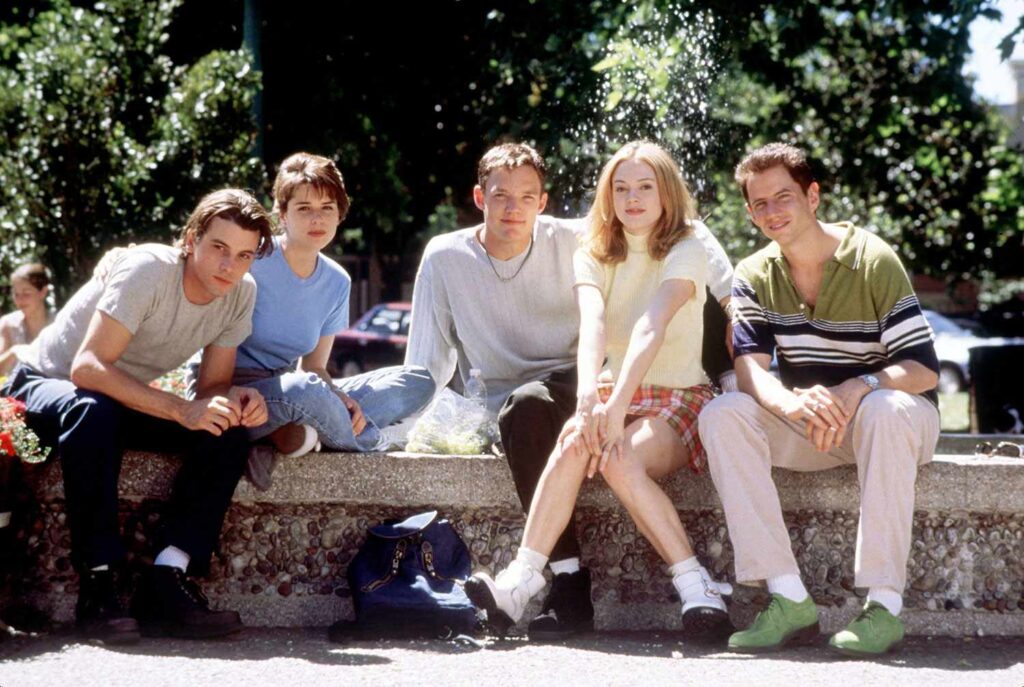
Scream 4 (2011)
- Plot Summary: Set in Woodsboro, the film follows Sidney as she promotes her new book while facing a new Ghostface killer. The killers are revealed to be Jill Roberts and Charlie Walker.
- Key Themes: Meta-commentary on reboots, exploration of the impact of social media and fame, critique of the quest for notoriety.
- Significant Scenes: The opening sequence with multiple “Stab” films, Sidney’s confrontation with Jill, Kirby’s horror trivia showdown.
- Production Quality: Directed by Wes Craven, written by Kevin Williamson, with a return to the series’ roots and a contemporary edge.
Scream (2022)
- Plot Summary: Set 25 years after the original murders, the film follows Samantha and Tara Carpenter as they are targeted by a new Ghostface killer. The killers are revealed to be Richie Kirsch and Amber Freeman.
- Key Themes: Meta-commentary on legacy and requels, exploration of toxic fandom, critique of the balance between new and returning characters.
- Significant Scenes: The opening sequence with Tara, Sidney and Gale’s return to Woodsboro, the final showdown with Richie and Amber.
- Production Quality: Directed by Matt Bettinelli-Olpin and Tyler Gillett, with Kevin Williamson as executive producer. Notable for its respectful homage to the original films and exploration of contemporary themes.
Scream VI (2023)
- Plot Summary: Set in New York City, the film follows Samantha and Tara as they face a new group of killers. The killers are connected to past characters, creating a sense of continuity.
- Key Themes: Meta-commentary on urban horror, exploration of franchise longevity, critique of the challenges of sustaining a long-running series.
- Significant Scenes: The opening sequence in the city, Samantha and Tara’s investigation, the final showdown with the killers.
- Production Quality: Directed by Matt Bettinelli-Olpin and Tyler Gillett, with inventive approaches and an expansion of the franchise’s universe.
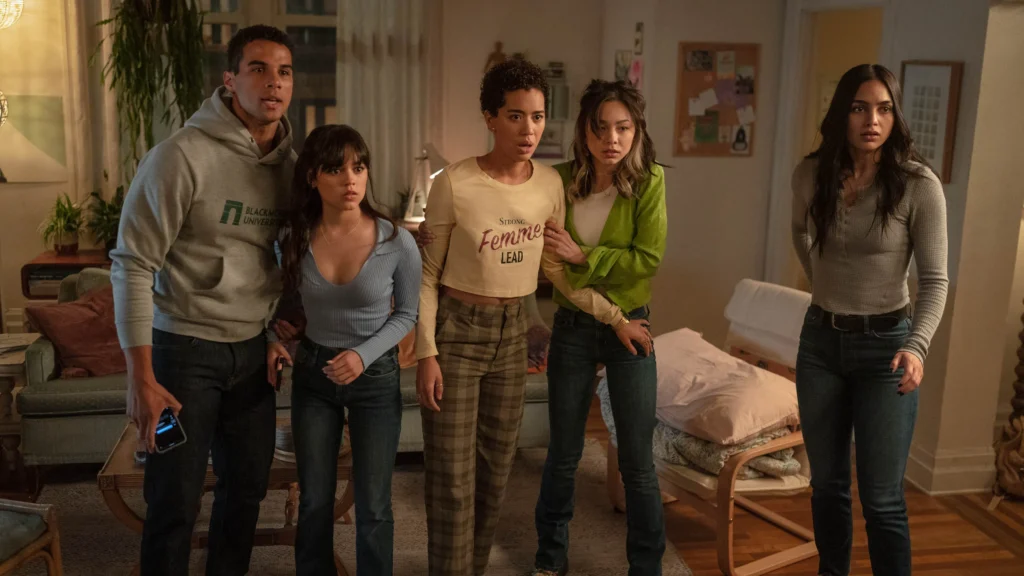


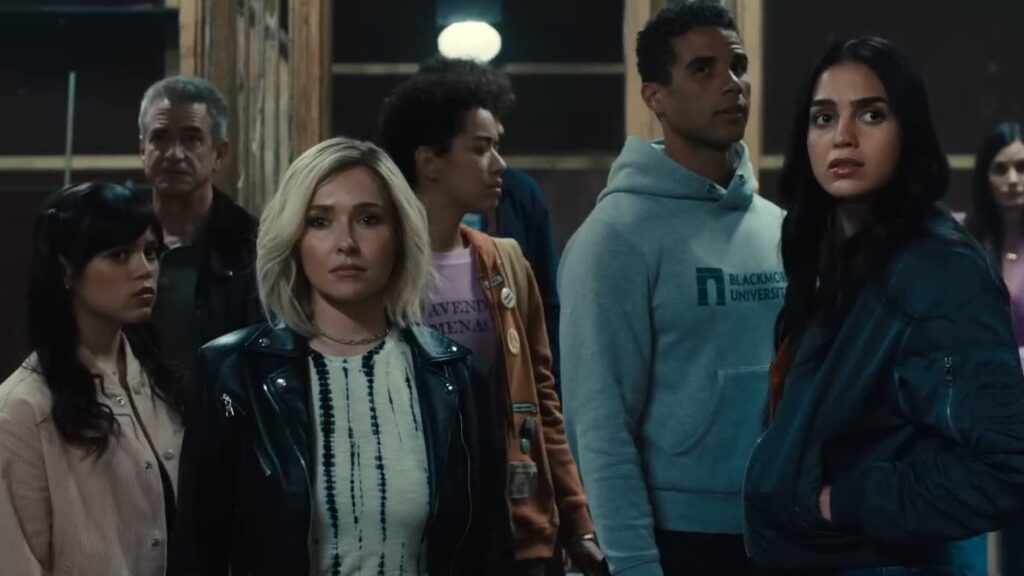
Final Thoughts
The “Scream” franchise remains a seminal work in horror cinema, blending meta-commentary, genuine scares, and strong character development to create a unique and enduring series. Its ability to adapt to changing cultural and technological landscapes, while maintaining its core identity, ensures its continued relevance and appeal. As we anticipate the future of the franchise with “Scream VII,” it is clear that “Scream” will continue to be a vital and influential force in the world of horror.

